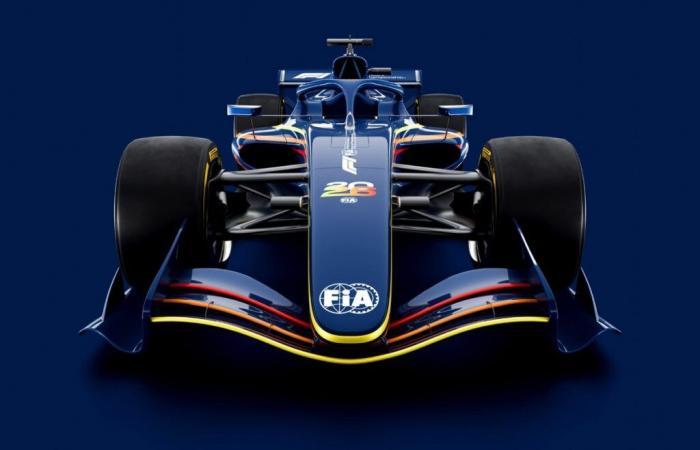In the middle of the entire talk on the hybrid motors of 2026 and how the power display will be used, reach the lower weight limit of F1 It can cause the teams the largest headache.
The minimum weight of the car for the new era of the F1 rules has been set in 768 kgwhich are 32 kg less than the current limit of 800 kg. That has been largely achieved by reducing the size of the cars, since the maximum wheelbase has been cut in 200mm to 3400mm and the width has been reduced from 2000m to 1900mm. It has also been in charge of Pirelli Entering closer tires, which will be of great help.
FIA would like the weight of cars to be reduced even more to improve the show, which, together with the costs, is one of the reasons why the maximum organism was willing to study a simpler motor formula in the future.
By 2026, however, a greater dependence on electricity will also lead to much heavier batteries. And as several teams have already had problems in previous seasons to adjust to the weight limit, meet the ambitious objectives of the FIA seems to be a puzzle.
Taking into account that Every 10 kg of additional weight equals about three tenths On the track, in the Paddock there is consensus in which the ability to approach the weight limit will be a large performance differentiator at the beginning of the era 2026.
Christian Horner, Red Bull Racing
The chief of the Red Bull team, Christian Hornerwhen Motorsport.com asked about the change, he said: “A number for the weight of the car have been taken out of nowhere,” suggesting that they have said an almost random number and now it is difficult to reach it.
“We have engines that are significantly heavier and a weight of the car that has become lower, so it will be a huge challenge for all teams to get it. Saving weight costs a colossal amount of money.”
“Last week there was talk of introducing steel skates, perhaps that would justify adding five kilos to the minimum weight. But it is what it is. It is the same for everyone. The teams will make decisions to achieve the weight, because the weight is time per return. It will be a great challenge for all the equipment to reach the minimum weight.”
Your Mercedes counterpart, Toto wolffhe agreed that ‘Addor the cars’ is a challenge, but supported the FIA’s decision to reduce the weight of the cars.
“As Christian said, you have to make decisions as a team,” Wolff said. “How long for return do you attribute to weight and ballast? Where do you want to save? You can compromise other pieces of performance if you want to reduce the weight, or the opposite. It is a challenge.”
“The reason we do is for cars to be more agile. Is it something important? I think so. We have to start somewhere. That initial step is difficult, but it is the same for everyone.”
Alpine’s technical director, David Sánchezalso described as “very aggressive” the limit of 768 kg, while the chief of Haas, Syoo komatsuhe labeled it as “undoubtedly a performance differentiator” and “a very expensive development.”
The chief engineer of Red Bull, Paul Monaghanoffered more details on how the ambitious weight target of the F1 will affect cars.
“It is a huge challenge to get this car to go to the weight limit for 2026, yes,” Monaghan admitted. “The design decisions we make in the coming weeks and months, will really influence it. The homologation tests have become a little more hard, which adds weight.”
“The chassis laminate may save us a little here and there, but everything will go on wheels. You can get 5% reduction in each component, if you want. Said crudely, it is 5% in the car. Suddenly, 5% is a large number, right? Will it be expensive engineering to get the weight of the same. So we will try. We will try, yes.”
To the question of Motorsport.com to what extent the weight of the chassis will influence the competitive panorama, he replied: “The only way to answer that question will be in March next year, when we see how much overweight everyone has. It is a relative scale. We can have an overweight of x kilos, but if everyone else has x more, it doesn’t matter, right?”






